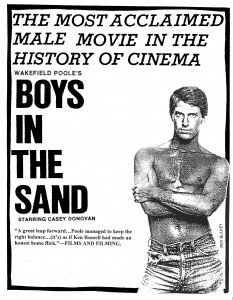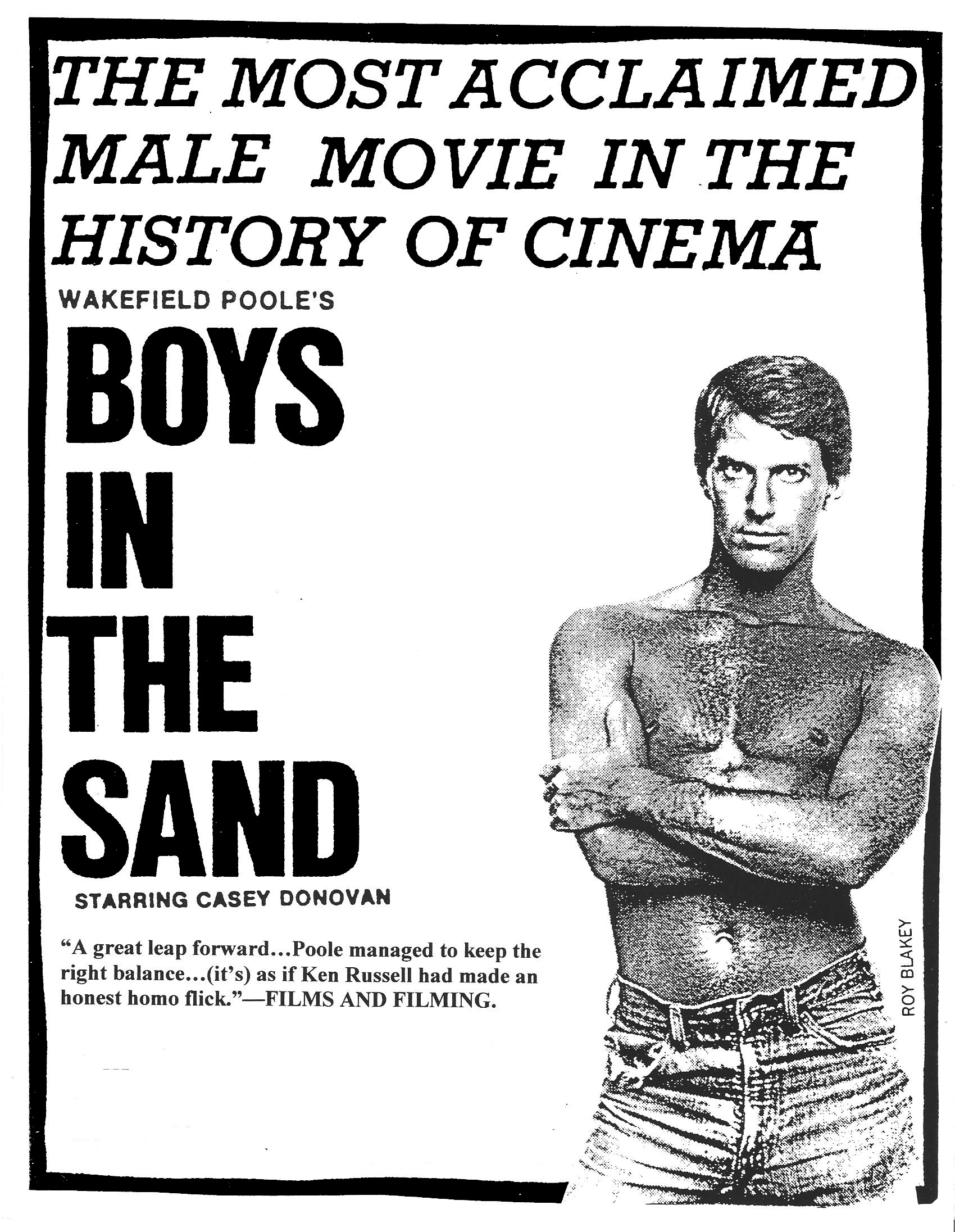WAKEFIELD POOLE (b. 1936) is an artist and innovator whose work deserves to be taken seriously for its contribution to gay culture and to culture in general. Like many creative people, Poole did not stick to just one medium, but because he became known as a maker of gay adult movies, he has been forever pigeonholed as a film pornographer.

He sang as a child, danced for the Ballets Russes in the late ’50s, became a choreographer on Broadway, then started experimenting with film in the late ’60s, just in time for gay liberation. By switching his talents to making adult gay movies—a very risky thing to do in 1971—Poole created what is arguably the first commercial movie in this genre, namely Boys in the Sand, which was the first gay porno to be reviewed in Variety magazine and the first to achieve box-office success. Poole would go on to produce a number of other movies, notably Bijou (1972), Wakefield Poole’s Bible (1973), and Take One (1976), which are discussed at length below.
Wakefield Poole’s autobiography, Dirty Poole (2000 and 2011), was turned into a documentary called I Always Said Yes: The Many Lives of Wakefield Poole (2013), directed by Jim Tushinski. Wakefield Poole has always thought of himself as an artist whose films are but one form of creative expression. His other accomplishments need to be acknowledged, but even if we focus only on the “blue” movies, we find that they contain hidden gems and a subtle beauty that make them true “art films.”







